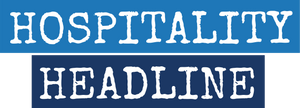What is business-to-business content marketing?
In traditional marketing you focus on two areas: brand building, which is awareness of your product and company, and working leads to close sales. We’re exposed to this “one, two punch” all the time with television advertising… “Tony the Tiger says it’s great”, now buy cereal in the supermarket shelves.
But for business-to-business marketing this is much too short of a customer journey. “Tony the Tiger says buy our CRM SaaS software it’s great”, now click the button to buy here, just doesn’t work. Businesses do this all the time. Look at any tradeshow with booths. Glance at my booth for too long to figure out what I do AND POUNCE here comes the salesperson to scan your badge and hound you later.
Why? Because very few people want to be sold. They instead want to buy. For complex and expensive products and services they want to convince themselves that you and your product are the right ones.
This requires relationship!
But how do you develop relationship with someone who isn’t a customer and doesn’t want to speak with sales? Answer, content marketing.
If we look at the one, two punch approach of traditional marketing we’re a) building Awareness and then, b) Converting to a Customer.
Content marketing instead adds some steps – a) build awareness, b) educate, c) convert to customer, d) earn referral from customers to new business.
How? By building relationship with your brand, company and products. And none of that process involves salespeople. They come much later to close business OR they are not necessary at all (if you're a product led company).
Some of the advantages include:
-Providing incremental value to people before they buy your products/services.
-Ability to touch and nurture relationships through automation and in mass.
-Creating value for customers around your brand early before they buy.
-Gathering information on what particular buyers problems, concerns, interests and needs are prior to sales contact.
-Educating buyers on your solution value and product particulars prior to the sales engagement.
-Low cost, long term nurturing of relationships that sales would never have the staffing or patience for.
-Allowing prospects to contact sales when they are ready and on their own terms (no hounding needed).
-Maintaining relationship and providing value throughout the life of the acquired customer (after the sale has been closed).
-Providing content that is likely to be shared by prospects because of the native value which provides viral marketing opportunity.
How do you create a content marketing program?
Getting the mindset right. Content marketing is not product cut sheets, technical documents, product training materials, company power point presentations, etc. All the traditional sales materials you have ARE ABOUT YOU. Those materials are about how great you are, and how great your product is and how lucky your prospects will be to use your greatness. You need to get over yourself!
Content marketing is about the prospect and customers. They are the heroes of their own stories. Everything is about them and their hero’s journey. They have barriers to their success (the enemy) and you are their guide providing them with the knowledge and encouragement to overcome their barriers. Do your current sales materials do this?
Step 1. Define your audiences.
You need to think about who you are going to create content for. This is a grouping of people into common backgrounds, roles, issues, needs, interests and behaviors.
Step 2. Understand what problems they’re seeking to solve.
What are the barriers and enemies your audience is trying to overcome? You can find out by asking them, by identifying them on social platforms and seeing what they are following, by gathering insights from the conversations your sales teams are having, by identifying them on Google search and seeing what they are searching for, etc.
Step 3. Test content to your audience.
Now that you feel you understand the audience problems offer simple content like short articles, inspirational messages, short videos, etc. about the problem and different ways to think, feel and act to find a path to problem resolution (and that isn’t a buy now link). Sometimes you want to test these materials private labelled and sometimes you want to do this with your brand attached. It depends on how big your audience is and how different your content approach is to your current brand positioning. If your audience is small you may want to white label test so you don't taint your audience with poor value fit.
Step 4. Variant, Test and Data Informed Decisions.
You don’t want to test a single sample of content. You want to have different content types (articles, images, infographics, video, etc.) and variation within those content types like art style, headlines, intro paragraphs, topics, etc.
You test the variations and use click-thru and submissions (conversion rates) as the litmus test of what works. You’ll be amazed that sometimes changing two words in a headline can double the conversion rate.
Take all the data in a test period of paid placements, content on your social channels, content on your website, etc. and track variation, display count (how many times content was displayed) and conversion percentages. You can now make data informed decisions on what content, delivered in what form and addresses which issues your audience cares enough about to interact with.
Step 5. Content Cascade
Now that you know who and what, you need to create content campaigns. This is the articles, white papers, videos, infographics, etc. that is the content that helps your hero on their journey to success. It also establishes the relationship with you.
Ultimately your content needs to have enough value to get your audience to opt-in to receive a regular pace of content via email, social feeds, content alerts, etc. That is the formation of a relationship between your audience and your brand.
In order to do this you’ll need relationship nurturing campaigns of content. The most efficient way to do this is a Content Cascade.
Gather your company’s knowledge experts. The people working at your company typically know a lot about your customers, your industry, your products and the issues they face. The fastest path to content is to “pull” that knowledge out of the heads of your founders, employees, partner companies, customers, etc.
Turn expertise into valuable content.
Start with video. Create structured questions and interview your knowledge experts around the topics your testing revealed your audience is interested in. If they are uncomfortable sitting in front of the camera consider having them create a Powerpoint presentation and record a mock webinar. Have the video professionally edited. Voila, you now have a piece of long form video to use. Next have the long video broken down into a series of 1-3 minute short topical videos and professionally edited. Congratulations you now have a video series.
Have more fun with conversations. Record a topical video conversation to get more than one viewpoint.
Pull the audio. Have the video editor pull the audio track from the video and create an introduction and conclusion audio clip to attach. Now you have long and short podcast materials.
Transcribe the audio into white papers and articles. Use software to transcribe the audio into text. You can now have a writer/editor (or a GPT) turn the content from those transcripts into knowledge expert articles. The long video can now be a white paper. The short articles can be a knowledge expert series.
Create graphics and infographics. Have a graphic designer (or use AI) take the articles and turn them into infographics that visually summarize the content. Have the designer also create visuals for all the materials and format the materials into content that can be stand alone, i.e. web pages and PDFs, as well as, social platform ready.
What technology for content delivery?
Now that you have your arsenal of content you need ways to deliver it to your audience. This will take some different forms. You’ll need a few things.
Trackable landing pages. You have a website but now you need the ability to create individual webpages for each presentation of content and the ability to track visitors and actions.
Email delivery of content. You’ll need the ability to have the audience register to receive emails, deliver content via email and track email performance.
Social Posts. Set your posting calendar far into the future with all the content to post, make sure to appropriate social summaries and click paths.
Video/audio hosting. You need to be able to provide video and audio to your audience. Some may require registration to view/listen.
Registration/download content. I don't like gated (contact info for content) because it introduces friction and drops downloads but you can use gated (registration required software) to get contact info (keep in mind a lot of it will be fake).
Central tracking/dashboard. With all the above activities going on you’ll need a way to pull the activities and the information together. This could be a spreadsheet but there are various free and paid tools to do this as well.
Feed conversions into your sales process. There needs to be a tie-in at some point with your content and connecting your relationships to sales. This needs to be tracked so the content efforts get credit for the revenue it creates by delivering a qualified, educated and warm lead to the sales team that they close business on. Often you just have sales ask a simple qualifying question like, "Did you read any of our content materials, which ones?"
Content marketing may seem like a lot of effort but it’s easier to run than you may think and it’s the modern method of business-to-business marketing in the 21st century.

